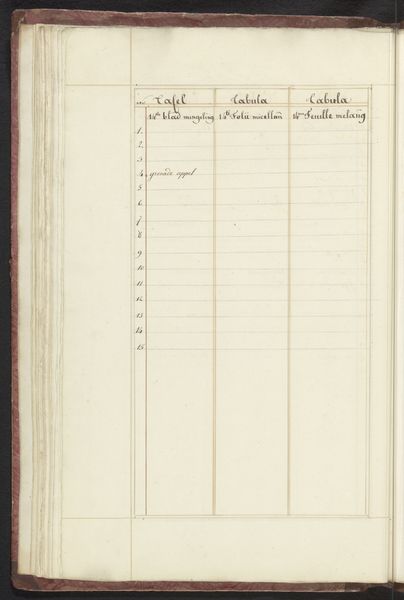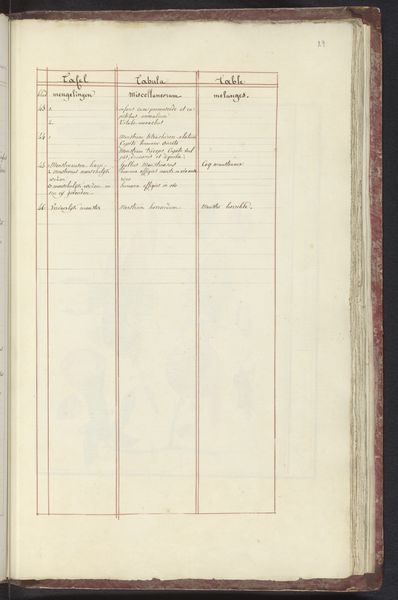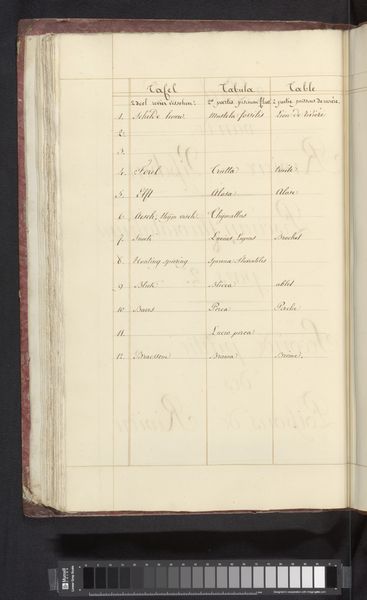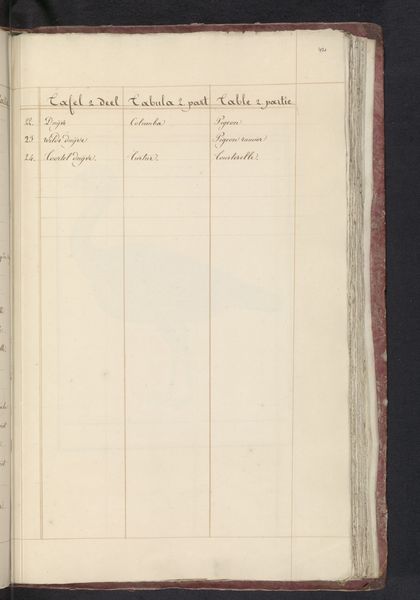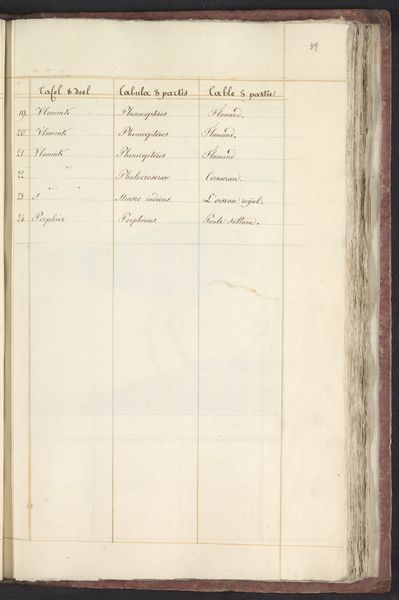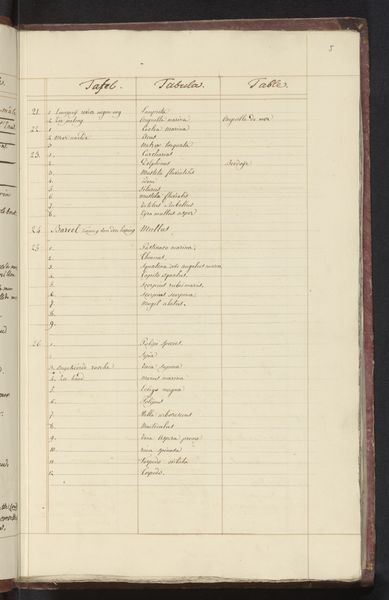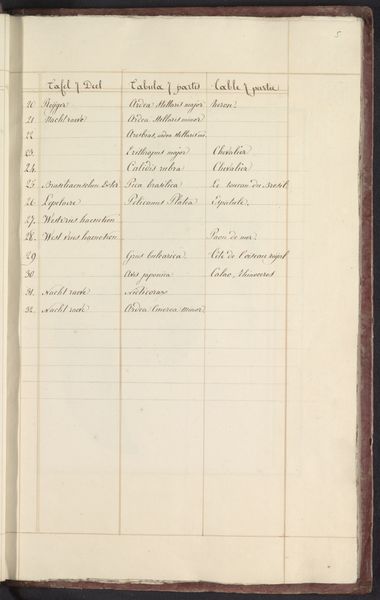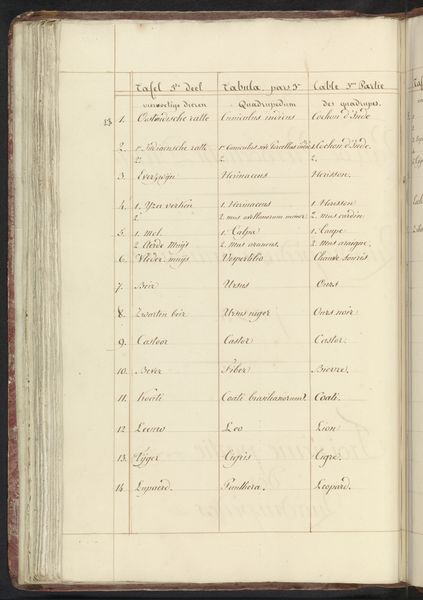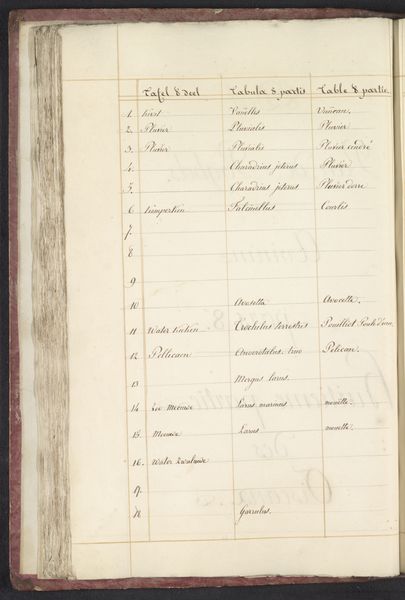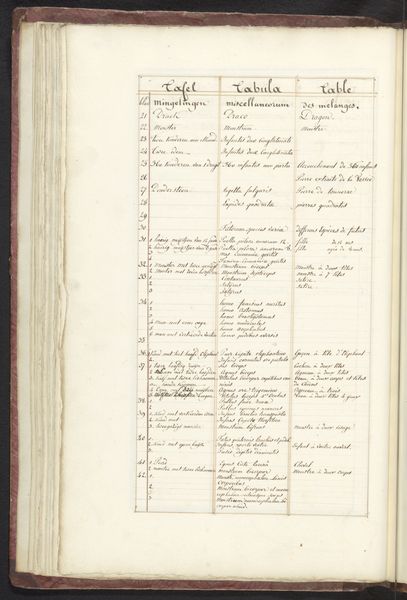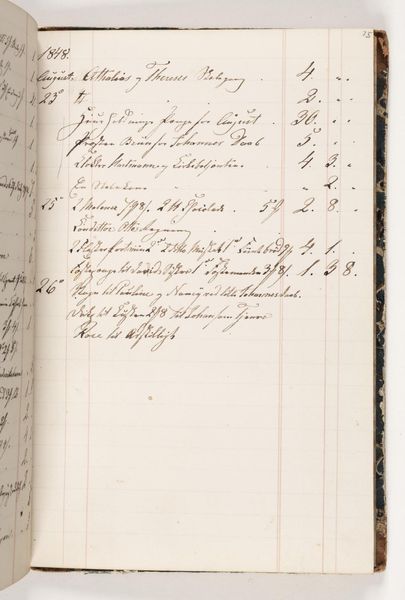
drawing, paper, ink, pencil
#
drawing
#
paper
#
11_renaissance
#
ink
#
coloured pencil
#
pencil
Dimensions: height 430 mm, width 270 mm
Copyright: Rijks Museum: Open Domain
Editor: Here we have "Lijst van dieren en planten in het elfde ensemble," created between 1809 and 1814 by Joseph van Huerne. It’s a list drawn in ink, pencil and coloured pencil on paper. What strikes me immediately is how meticulously organised it is, almost like a scientist's notebook, despite being rendered with artistic tools. How do you interpret this work? Curator: That’s a keen observation. The meticulousness speaks volumes, doesn't it? It feels like Van Huerne isn't just cataloguing; he's wrestling with knowledge, trying to contain the wildness of nature within the structure of language and classification. The mix of drawing and text suggests a desire for both precision and subjective understanding. I imagine him hunched over this list, a bit like a medieval monk illuminating a manuscript, only instead of saints, he’s recording snails and herbs. Doesn't it evoke that sense of a single individual confronting an encyclopedic world? Editor: Yes, it does! So, is the artistic value primarily in the historical documentation, or do you find aesthetic value as well? Curator: Ooh, excellent question. For me, the aesthetic lies in the tension between the artistic medium, the seemingly objective pursuit, and the undeniable mark of a human hand. The line weights, the almost tentative script, they hint at Van Huerne's presence, his breath on the page. It’s like finding poetry in a botanical guide, a kind of quiet beauty born from scientific curiosity. Editor: That makes me appreciate the work so much more, the tension between art and science, and Van Huerne’s personal mark. Thanks! Curator: Absolutely! And now you’ve got me thinking – what if his list is actually a hidden bestiary, filled with coded messages only *he* could decipher? The possibilities, like the number of creatures in the world, are endless!
Comments
No comments
Be the first to comment and join the conversation on the ultimate creative platform.
